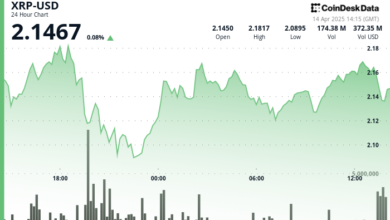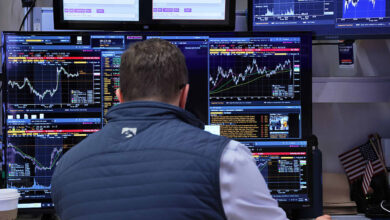Wall Street starts to cut China GDP forecasts on U.S. trade tensions

The ongoing trade tensions between the U.S. and China have prompted investment firms like Citi to lower their growth forecasts for China. With escalating tariffs and restrictions on both sides, analysts are revising their projections for China’s GDP growth in 2025.
Citi analysts have cut their forecast to 4.2%, down by 0.5 percentage points, citing limited prospects for a resolution between the two countries. Natixis has also revised its forecast to 4.2%, while Morgan Stanley and Goldman Sachs are keeping their predictions at 4.5% for now.
China had set an official growth target of “around 5%” for this year, but achieving this goal is now seen as challenging. The uncertainty surrounding the economy has increased significantly, with the possibility of further tariff hikes from the U.S.
President Trump recently announced a 50% increase in tariffs on Chinese goods entering the U.S., in response to Beijing’s own tariff hikes. With multiple rounds of tariff increases this year, the total tariffs on Chinese products have now reached 104%.
Goldman Sachs analysts believe that while the initial tariff increase could reduce Chinese GDP by 1.5 percentage points, subsequent hikes would have a smaller impact of 0.9 percentage point. Chinese exports to the U.S. make up a significant portion of China’s GDP, with a potential impact on both domestic value add and manufacturing investment.
Despite the challenges, some economists are maintaining their GDP forecasts for China. Nomura expects a 2% drop in exports this year but is keeping its GDP forecast at 4.5%. The fluid situation makes it difficult to estimate the full impact of the trade war on China’s economy.
In response to the escalating tensions, China is considering monetary policy measures to stimulate growth. The diminishing impact of tariffs could signal that U.S. leverage is reaching its limits, prompting Beijing to prioritize strategic gains over economic costs.
Overall, the trade tensions between the U.S. and China are creating uncertainty for the global economy, with both countries facing challenges in achieving their growth targets. It remains to be seen how the situation will evolve in the coming months and what impact it will have on the world economy.





